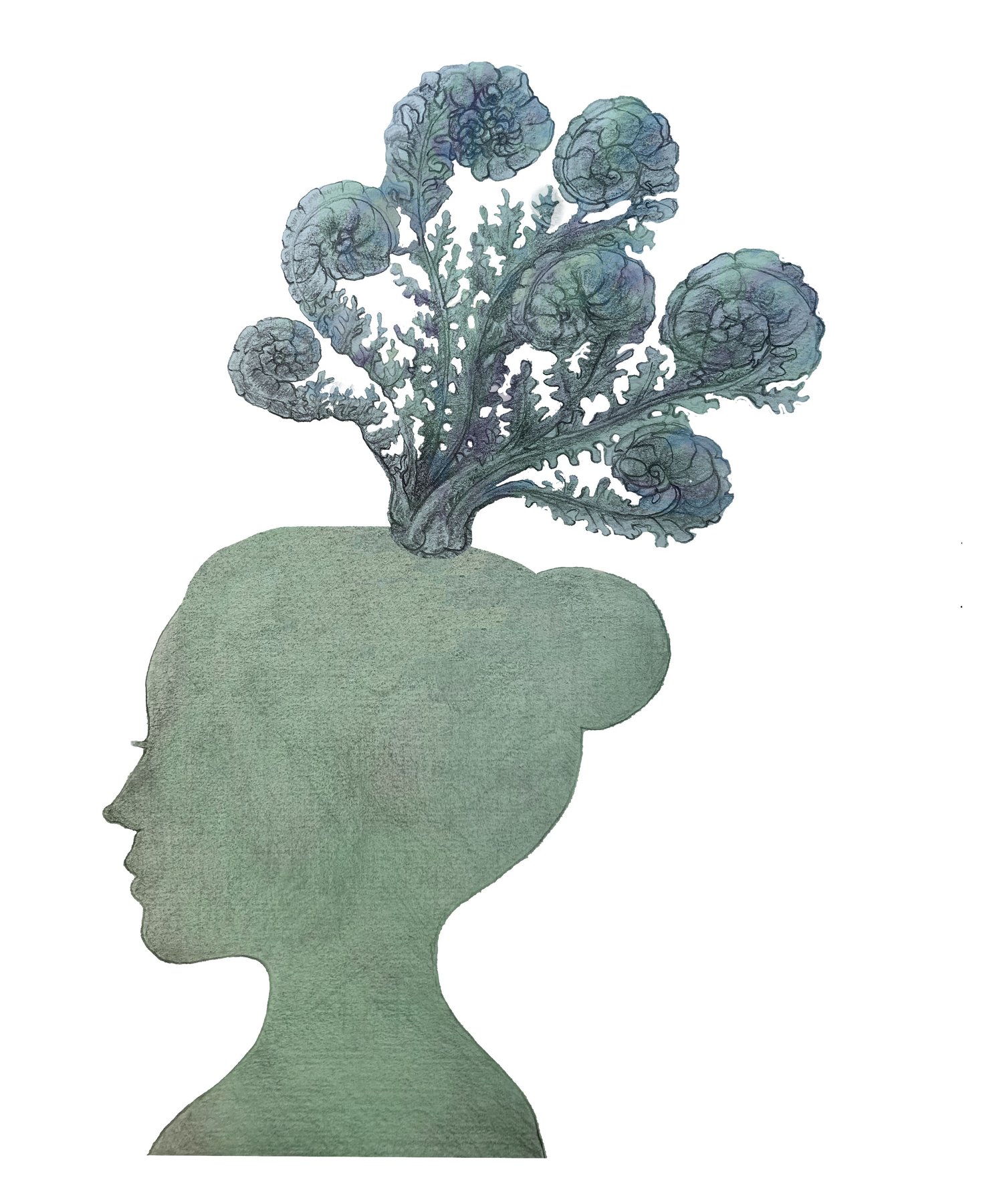Botanical Illustration
“Invasive Ice Plant (Carpobrotus edulis)”, botanical plate, tradigital, 2021.
Brought initially from South Africa to the coasts of California in the early 1900s to control erosion, the ice plant proved to be invasive and today out-competes many coastal endangered plant species.
Botanical illustration is an ancient practice that continues to be globally revered today. Botanical illustration differs from botanical art in that its purpose is to forward knowledge in the field of botany. Frequently, this means the botanical plates demonstrate the life cycle, anatomy, or some other botanical aspect (such as cellular components).
The earliest botanical illustrations known are an ancient Egyptian tomb fresco painting depicting a woman holding a lotus (dating to 1539-1425 B.C.E), along with an ancient Chinese buddhist cave paintings depicting Bodhitsattva holding a pink lotus (700-900 C.E). The oldest botanical book illustration is the Johnson Papyrus, from c. 400 C.E, a papyrus fragment with a depiction of comfrey, which is a medicinal plant. Medieval herbals led to Botany textbooks, which led to Carl Linnaeus’ binomial nomenclature system that formed modern biology’s system of classification.
“Portrait of a living fossil: Queen Protea (Protea magnifica), and Endangered Species”, watercolor, 2023.
“Half Moon Wonderland orchid (Cymbidium hybrid spp.)”, watercolor, 2023. Botanical portrait from the Smithsonian Portrait Gallery’s annual orchid show,
“Snapdragon (Antirrhinium majus)” botanical plate, ink, 2021.
“A Surprise Visitor, an Eastern Blue Swallowtail (Battus philenor) on a Cultivated Dahlia”, watercolor, 2021. Scroll to the first post on my Instagram to view a video of me working on this painting from the live subjects of the flower and the unexpected visit from this beautiful butterfly.






